What is pelargonium: all about the plant
Pelargonium is an indigenous inhabitant of the South African province, from where most of the plant species spread. Pelargonium belongs to the Geranium family, and many of its species have gained popularity in indoor floriculture. The familiar name "geranium" is not entirely correct, but many growers often use it when talking about pelargonium.
But according to scientists, the Geraniev family includes plant species, the fruits of which are similar to the beak of birds. Later, there was a division into frost-resistant species (Geranium) and preferring a warm climate (Pelargonium). It was the heat-loving plants that got their name pelargonium.
Content:
- Characteristic features of pelargonium
- Species classification and varietal diversity
- How to propagate and plant a plant
- Competent flower care
- Protection against diseases and pests
Characteristic features of pelargonium
Pelargonium, which are often called kalachiks, were originally aristocratic plants that could only decorate greenhouses in rich mansions and villas. Today, the plant is widely used by landscape designers for landscaping parks and indoor floriculture. Pelargonium is able to fit into any environment - a strict office, a colorful flower bed, decorate a garden, balcony or apartment window sill.
In their natural environment, pelargonium and geraniums are in the form of shrubs or semi-shrubs, as well as succulent ones. The crowns are formed by erect shoots. Their diversity numbers more than three hundred species. The plant is covered with leaves of a wide variety of shapes, and the flowers are collected in umbrella-shaped inflorescences. After the end of flowering, fruits are formed on the bushes, which are capsules with preserved sepals, which open from the bottom up, like a bird's beak.
Some members of the family are valued in cosmetology and perfumery, and valuable essential oils are extracted from them.
The aroma of pelargonium can relieve nervousness and insomnia. But not everyone can stand the strong smell of flowers. Pelargonium is often used in folk medicine. Preparations based on it lower blood pressure, help with diseases of the cardiovascular system, restore metabolism and the functioning of the digestive system. Essential oils extracted from pelargonium are used in cosmetology and perfumery, and it also has disinfecting properties and helps to cleanse the air of harmful impurities.
Species classification and varietal diversity
Plants of the geranium family are represented by five genera, which differ in genetic structure and cannot interbreed with each other. New varieties are only bred within one genus.
In indoor floriculture today, the main varietal groups of pelargonium are common, which include a variety of crop varieties:
- Zonal (Pelargonium zonale Wild). The most common varieties that can be cultivated both in the flower bed and on the windowsill. The varietal variety of this group is replete with many colors from white to deep red tones. Zonal pelargoniums are distinguished by a long flowering period, which lasts from spring to late autumn. In winter, these plants are dormant.Reproduction of zonal varieties occurs by seeds and by cuttings.
- Royal (Regal Pelargonium). It got its name from the large, spectacular flowers with wavy petals of red, purple and white shades. It is often referred to as large-flowered pelargonium. Flowering begins in April and lasts for four months. This variety is quite capricious and in order to get flowers from it, you need to provide competent care in the winter.
- Ivy (Pelargonium peltatum). This plant has long lashes, for which it is appreciated by landscape designers and is often a decoration for balconies. The stems are densely covered with leathery leaves, which makes ivy-like pelargonium look like ivy. The plant blooms with medium-sized flowers with narrow petals. When this variety was crossed with zonal pelargoniums, botanists obtained an improved variety and named it Hybrid-Ivy-leaved helargonius. The new variety is distinguished by more rounded pubescent leaves and large, rose-like flowers.
- Fragrant. Often grown indoors. Miniature bushes up to 25 cm covered with heart-shaped leaves. Flowers gather in umbrellas and smell nice. The color of the petals is pink. The flowering period lasts all summer months.
All varieties of pelargonium are popular with flower growers not only for their spectacular appearance, but also for their ability to purify the air, as well as relieve headaches.
How to propagate and plant a plant
Pelargonium can be propagated in three main ways:
- seminal
- by cuttings
- dividing the bush
It should be remembered that during seed reproduction, the cultural characteristics of the mother plant may not be preserved. Therefore, for ornamental varieties and hybrids, two other methods should be used. Before proceeding with the reproduction of a flower, you need to prepare the soil mixture in advance.
Pelargoniums do not have special requirements for the composition of the soil, but in order for the breeding process to be successful and the plant to recover from stress faster, a loose, well-drained soil should be prepared. There are several suitable soil mixtures.
- Ready-made universal earthen mixture for indoor plants with the addition of perlite, vermiculite and river sand. But the first two components are easily replaced by peat and humus in equal amounts.
- The top layer of garden or forest soil, which should be collected under perennial shrubs or trees.
- Self-prepared soil should consist of eight parts of sod soil, two parts of humus and one part of coarse river sand.
It must be remembered that the soil mixture for pelargonium must have good water and air permeability.
Sowing pelargonium seeds does not always give the expected result. Often times, the seeds simply don't germinate. But in order to carry out the procedure correctly and increase the chance of germination, you should adhere to a certain scheme:
- Sowing work should start at the beginning of March.
- Prepare shallow containers with drainage holes.
- Fill the pots with an earthen mixture treated with a manganese solution.
- Spread the seeds over the surface of the soil and deepen them a little.
- Cover crops with transparent film and place in a warm place.
- After the first shoots appear, the film cover must be removed.
- Seedlings are seated in individual containers after the appearance of two pairs of full-fledged leaves.
Cuttings gives a more stable result and does not require much effort. You can harvest planting material at any time of the year, but the most optimal period is from March to May.
The procedure is carried out with a sharpened sterile instrument, with which the lateral shoots of pelargonium are separated, at least seven centimeters long and with three leaves. Sections are treated with activated charcoal or charcoal powder, which prevents the penetration of pathogenic microflora into plant tissues.
Florists use three main ways of rooting cuttings:
- The cuttings are dried in the open air for several hours, after which they are immediately placed in a previously prepared soil mixture.
- The cuttings are rooted in wet sand. Waterlogging should not be allowed, otherwise the decay process will begin. It is also necessary to ensure that moisture does not get on the leaves and shoots. When rooting in sand, you need to maintain a temperature of at least 22 degrees. The cuttings will take root within a week and a half, after which they can be transplanted into permanent containers filled with soil mixture.
- The cuttings are placed in a container with water until strong roots are formed, after which they are planted in individual containers.
All three methods give good results if all the necessary conditions are met. Rules for planting cuttings in the ground:
- a layer of drainage and soil mixture is laid on the bottom of the pot
- the soil is well spilled and left for some time so that the glass is excess liquid
- cuttings are planted, deepening them by 2-3 cm
If new leaves appear within a month, this means that young plants have taken root and they should be provided with standard care. Experienced growers do not recommend cuttings in the winter, but sometimes there is such a need. In order for the procedure to be successful, you need to follow a number of rules:
- During the rooting of cuttings, it is necessary to maintain a high temperature.
- Extend daylight hours to 14 hours using artificial lighting.
- The mother plant must be healthy.
- All other care measures correspond to standard spring cuttings.
Dividing a bush is the easiest and most affordable way to reproduce pelargonium... It is carried out in the process of plant transplantation. Before the procedure, the soil must be well moistened. Then the plant is carefully removed from the pot, cleaned of excess soil and divided into several parts. Each piece should be with roots and part of the shoots. The separation is carried out with a sharp instrument, trying not to damage root system... Each part is a new young specimen that needs to be transplanted into a separate pot.
Competent flower care
Pelargonium belong to unpretentious plants, so you don't have to spend a lot of effort on caring for them. But compliance with standard procedures is necessary:
- Lighting and temperature. With enough light, the flower will have a decorative and healthy appearance and bloom regularly and abundantly. Therefore, it is recommended to place pelargonium in a well-lit place, but direct sunlight should not be allowed. In winter, the plants provide an additional source of light. The optimum temperature for good flower development is between 21 and 26 degrees. But in winter, you need to lower the temperature to 14-16 degrees so that the plant leaves during the dormant period and can restore its strength.
- Irrigation. Pelargonium should be watered regularly, but in moderation. The frequency of watering depends on the drying time of the topsoil. When the plant is dormant, then watering is reduced. Pelargoniums have the ability to accumulate moisture in their tissues, therefore they tolerate short-term periods of drought. Stagnation of moisture should not be allowed, because this depresses the root system and increases the risk of developing rot. The plant does not need spraying, besides, such a procedure has a bad effect on the condition of the flowers. The flower is not picky about humidity, but needs regular ventilation.
- Fertilization. If the soil mixture is prepared correctly, then it is enough to feed pelargoniums once a month with complex mineral fertilizers for flowering plants. The main focus is on phosphorus, potassium and nitrogen.To increase the duration of flowering, flower growers recommend once a week to water the plant with water with the addition of iodine - no more than one drop per liter of liquid. Top dressing should be applied after irrigation so that the soil is still moist. In the summer, during the procedure, the plants are removed in the shade for 2-3 hours.
- Bush formation. To give the pelargonium bushes a neat well-groomed look, as well as to increase the number of flower buds, you need to carry out regular pruning. The procedure is carried out in the spring. All shoots are cut from the bushes, leaving no more than five growth buds. Pruning can also be done in the fall.
- Transfer... Young pelargoniums need annual transplants. This is necessary for the normal development of plants. The procedure is carried out in the spring before the start of sap flow. The containers should not be large, otherwise leafy shoots will actively grow, which will negatively affect the quality of flowering. If flowers are planted in boxes, then an interval of no more than 25 cm should be observed. Experienced growers do not recommend keeping plants for more than three years, because they lose their decorative qualities. It is better to divide such flowers into cuttings when transplanting and grow new specimens. After the purchase, do not rush to transfer. The plant will need at least a month to acclimatize. Transplanting is carried out in the same way as planting cuttings.
Protection against diseases and pests
Pelargoniums are quite rare, but with improper care, they can be affected by fungi and bacteria, which are the cause of the development of many diseases. For the prevention of diseases, it is necessary to follow the rules of agricultural technology. And if the disease has already struck the plant, then you need to fight it fungicidal and antibacterial drugs, after removing the affected parts of the flower. It is also recommended to transplant a plant with a complete soil replacement.
Pelargonium pests are most often attacked by thrips and aphids... Aerosol preparations with essential oils or a soap solution with potassium permanganate will help get rid of insects.
When caring for pelargonium, one should observe the measure in everything and do not forget to ventilate the room in a timely manner.
Hygiene procedures are carried out using soft dry napkins. You should wipe the leaves carefully, because the stems of the plant are rather fragile. Should not be left pelargonium in the bedroom or children's room at night, because they have a rather strong odor with medicinal properties, an excess of which can depress the body.
More information can be found in the video:



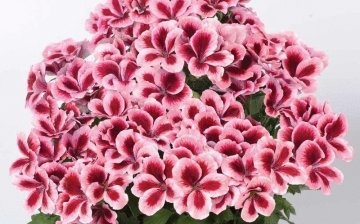
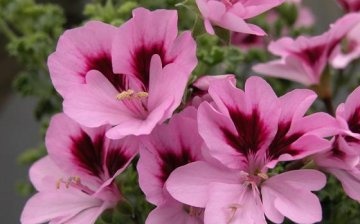
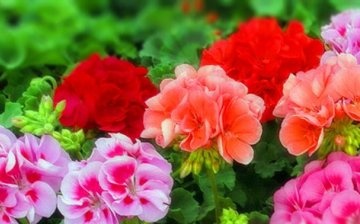

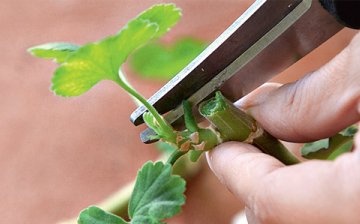
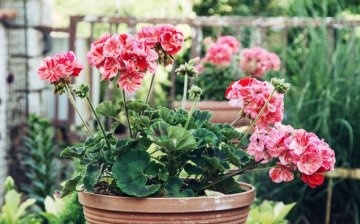
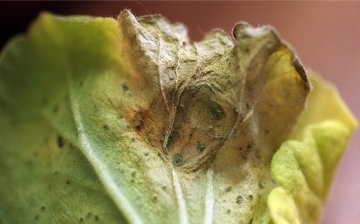







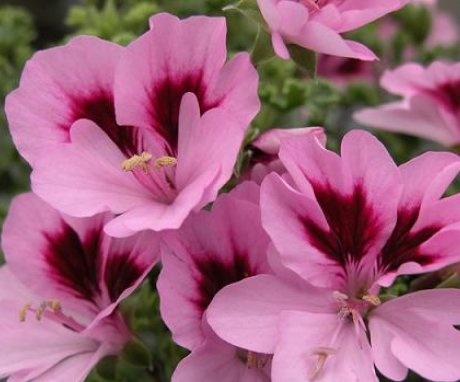
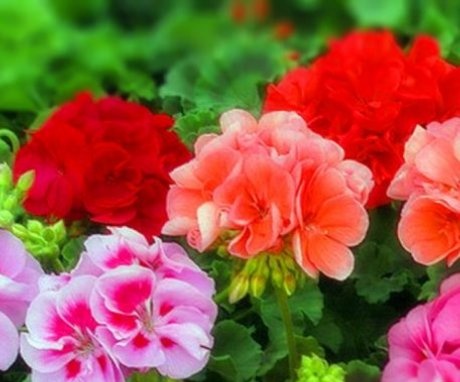
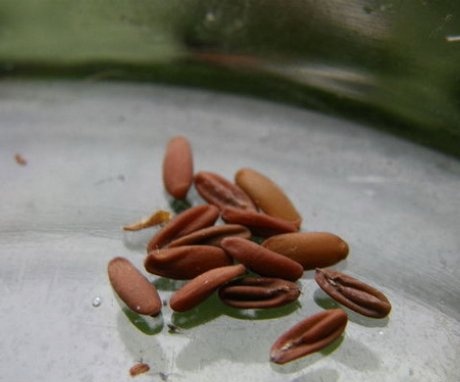
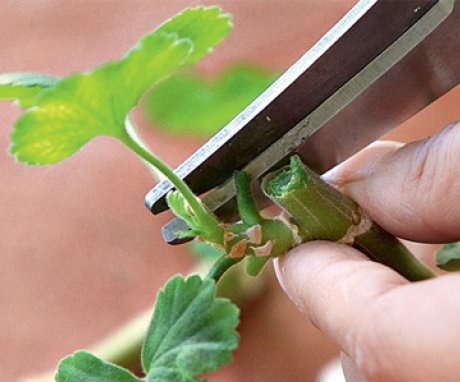

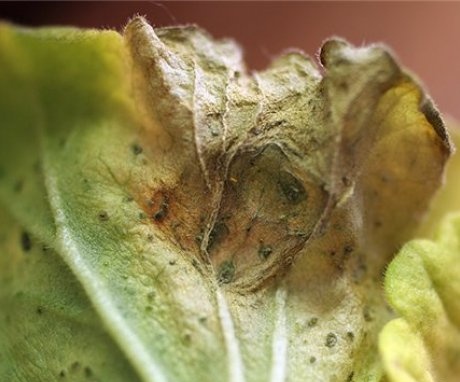
We plant pelargonium, only on the balcony, in a long box on the fence. Pelargonium flowers are very beautiful, but they have a strong smell. Therefore, we do not grow flowers in the room. On the balcony, it is a completely different matter, open space and the smell does not accumulate anywhere, like in a room.
For me, pelargoniums are my favorite flowers - positive, do not require much maintenance and delight with their flowering most of the year. They have so many different varieties and shades of colors that you always want to plant new items.